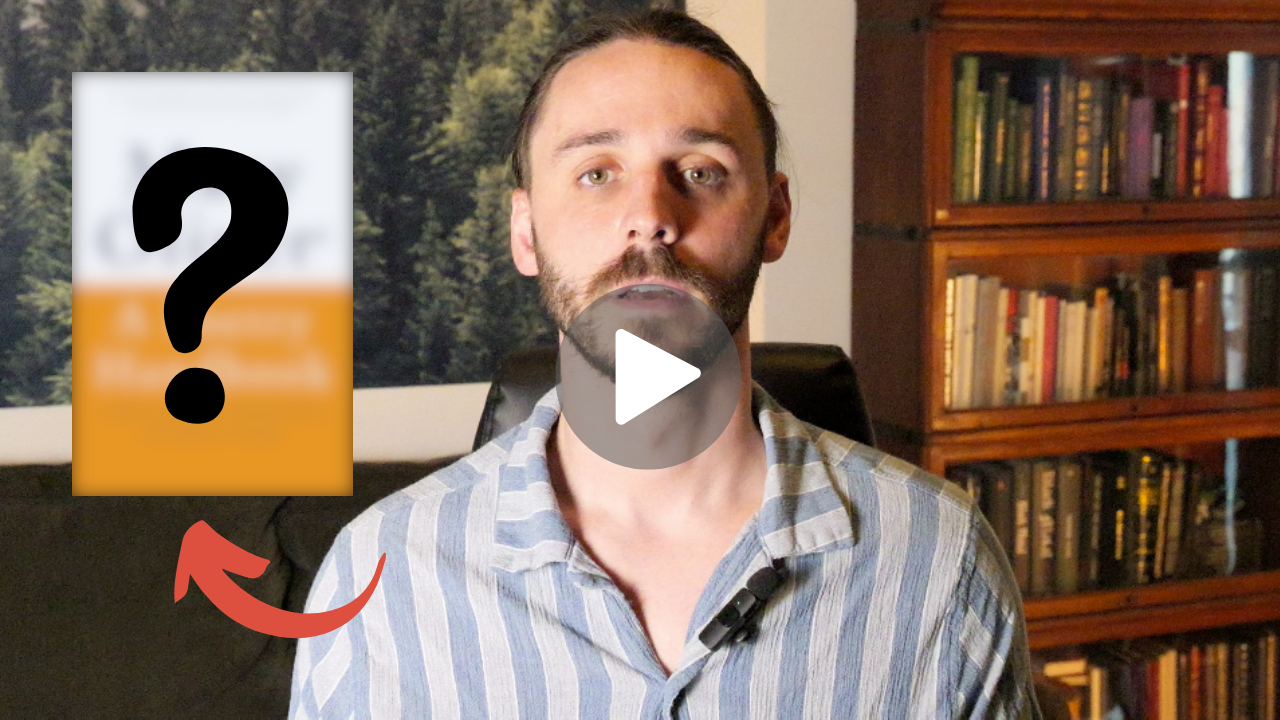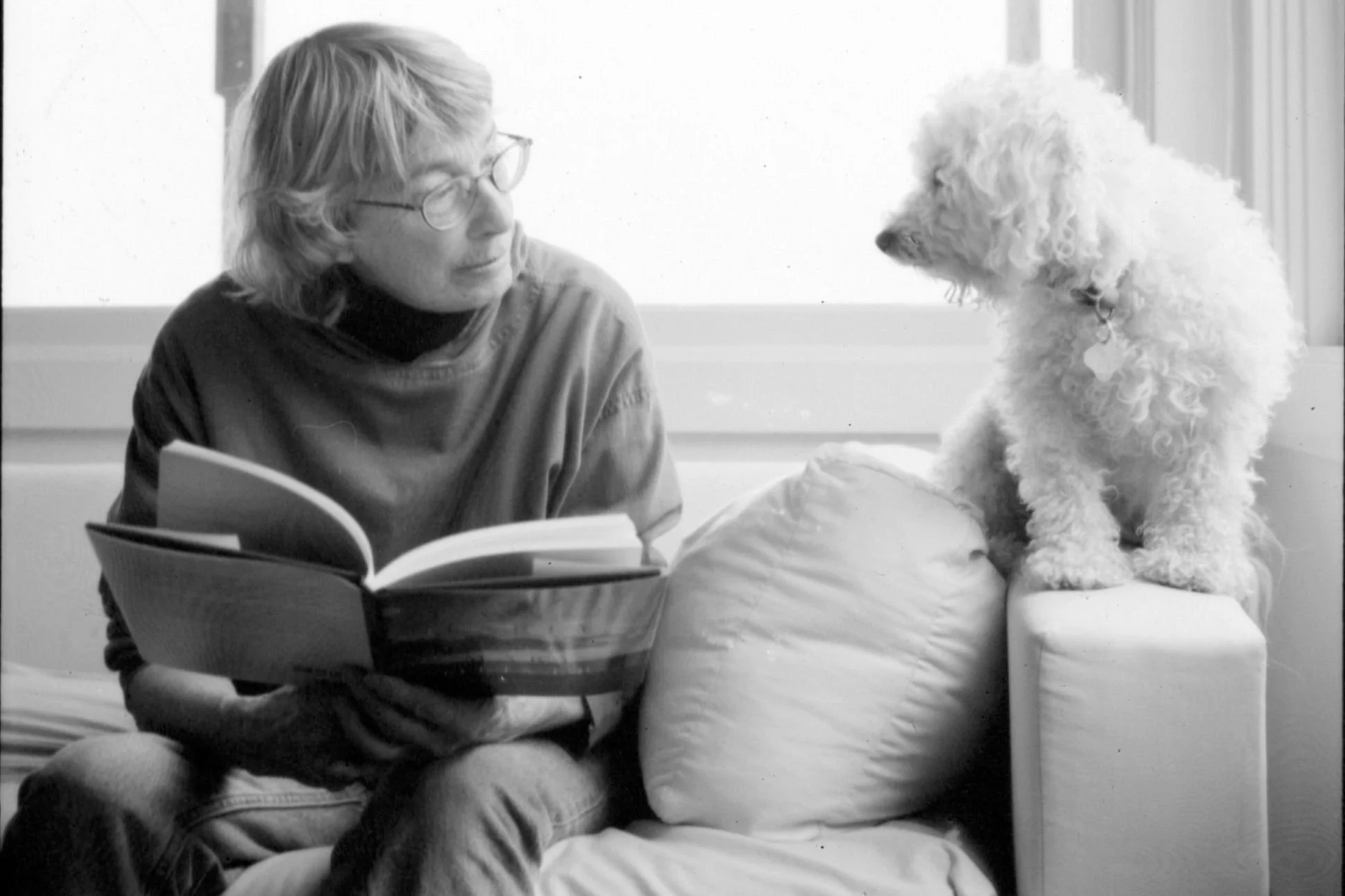Write Better Poems with Mary Oliver’s A Poetry Handbook
20 minutes of expert poetry writing advice video for beginners.
13 Easy Steps to Write Better Poems with Mary Oliver’s A Poetry Handbook
Mary Oliver's A Poetry Handbook is one of the best books on “how to get better at writing poetry” to help you write stronger poems.
This article includes 13 easy steps, each of which contains Mary Oliver’s timeless wisdom.
If you’d prefer to watch a 20-minute YouTube video I made about this subject, click here.
Otherwise, let’s get into it!
An Introduction to Mary Oliver
A Poetry Handbook opens:
"Everyone knows that poets are born and not made in school… [its] something essential [that] can’t be taught; it can only be given, earned, or formulated in a manner too mysterious to be picked apart and redesigned for the next person.”
However, Oliver goes on to say: “Whatever can’t be taught, there is a great deal that can, and must, be learned…” A Poetry Handbook is a great place for that learning. She refers to a poem as both a written and a mystical document: the former has techniques you can learn, and the latter is intuitive and imaginative — both of which can be synthesized to ensure you write a strong poem.
Often, people shun poetry as an art that requires learning. In visual arts, there’s a step-by-step process that students go through to learn how best to sketch a model or brushstroke a dramatic landscape. According to Oliver, the instructor gives feedback, and no one worries about their creativity being stifled. She states that poetry should be the same: “It is craft, after all, that carries an individual’s ideas to the far edge of familiar territory.”
As student poets are often encouraged to express themselves without technicality, they are less likely to develop a more complex style, tone, or maneuver. This leaves them woefully unprepared, which can result in a poem that fails to capture its intention and a frustrated writer.
Getting Ready
In the first chapter, Getting Ready, Oliver says that, “Writing a poem… is a kind of possible love affair between something like the heart (that courageous but also shy factory of emotion) and the learned skills of the conscious mind.”
Writing powerful poems requires skillfully mixing feeling, intuition, and intellect. The more topics you know, the more poetry techniques you learn, the more your intuition will guide you to writing stronger poems.
But becoming a skillful poet it takes, I’m sorry to say, Discipline. Without discipline, your poetry muscle will not grow. If you endeavor to be an excellent poet, as Oliver encourages—to write as well as John Keats, W.B. Yeats, or William Carlos Williams—you must be disciplined.
Oliver suggests you turn up for yourself. If you set the writing task at a specific time, turn up. If you don't, Oliver warns, inspiration will only occasionally appear. In the worst-case scenario, inspiration may “stay silent a lifetime.”
2. Poems are passionate relationships
Passionate relationships, despite initial excitement, take effort, care, and love. According to Oliver, the poems will not come without “anything less than a perfect seriousness… this is the first and most essential thing to understand. It comes before everything, even technique.”
If you are not serious about your relationship with poetry, you cannot expect to get the maximum out of it, like you cannot expect to get the optimal level out of a partner if you do not put in maximum effort yourself.
Oliver goes on to say that “poetry is a river.” That there’s not one, but “many voices” that travel inside it. In the world, the “desire to make a poem… [will] never pass.”
You can go to the river and scoop a poem out and drink its liquid crystal down, or you can pour your poetry into the rushing. You, as a poet, are part of a millennia-old human tradition. This ancestral inheritance is sacred.
3. Reading Poems
In the same way that to be a good musician, you must train your ear by listening to great music, learn techniques from the best musicians, and practice to improving your craft, “(T)o write well,” Oliver says, “it is entirely necessary to read widely and deeply. Good poems are the best teachers.”
If you think you can become great or even good without the discipline of interacting with others, you are sorely mistaken.
Great poets read and write.
Read past and present writers: build your knowledge bank of poetry out of what came before you, and during your life, and in the house of poetry, you can decorate your room.
4. Imitation
Oliver believes that, like children, we should learn to imitate — as that will help us become better poets. In our culture, we value originality so much that imitation is considered a sin, but imitation helps us learn fully, so we imitate styles, language choices, tones, topics, themes, and more.
Think of yourself as the poetry equivalent of a cover band: you learn by mimicking, and your voice will strengthen over time.
And this takes practice, practice, practice. Our beloved poet says: “One learns by thinking about writing, and by talking about writing—but primarily through writing.”
5. Sound
“To make a poem, we must make sounds. Not random sounds, but chosen sounds”
We select words in poetry for sound and meaning. Think of the following: Are rock and stone the same thing?
Rock is harsher, the sound is more protruding (the “k” stops the sound), the shape of a “k” is two diagonal sticks hanging out of a vertical one, and the “o” in it is short: rock. But in stone, even the vowel is different. The -one in stone is longer, and it is smoother, less harsh, and more rounded.
So in different poems, depending on factors like tone, rhythm, and assoance, you should choose the best word for the context.
Each sound you choose should be deliberate — there are many other scenarios like the rock and stone one.
6. The Line
Most poems, except prose poems, are made up of lines. Oliver goes through different technical terms for the length of a poetry line, she discusses metrical verse, scansion, iambic foot, dactyl, and more.
She explains the difference between the length of lines and how they interrelate.
For example, a pentameter has five feet in it, consisting of two syllables per foot. Notice the speed between this pentameter:
“How far that little candle throws his beams!" From Shakespeare’s The Merchant of Venice.
Now this tetrameter—four feet—by Henry Longfellow: "Dark behind it rose the forest."
Say them aloud:
Pentameter: “How far that little candle throws his beams!"
Now the tetrameter: "Dark behind it rose the forest."
Notice the effect of the line changing dependent on speed?
7. On constancy
All poems have rhythmic patterns, like music: it only, Oliver says, takes two or three lines for the rhythm to translate from poem to reader. She states, “Rhythm is one of the most powerful of pleasures, and when we feel a pleasurable rhythm we hope it will continue.” She rounds off this phrase by saying: “When it does [continue], the sweet grows sweeter. When it becomes reliable, we are in a kind of body-heaven.”
Even if you are writing free verse, that is, poems that are free from traditional form or meter, rhythm is still essential. Even now, there is rhythm present in this blog post.
Your engagement would change dramatically if my Rh-TYHM was… more… like… this. Oliver warns writers to remember how potent rhythmical patterns are because everything is underlying rhythm.
If you put one word alone on a line, for example, it has become “critical… all attention is drawn to it”—especially if it interrupts the rhythm. If you change the rhythm you establish, it will change the reader’s mood. If you do this for no good reason, you will have confused or even, in Oliver’s words, “sensually irritated” the reader. I don’t know about you, but being sensually irritated sounds pretty damn irritating.
8. On variation
Variation is a strength. I’m using variation in this blog post: I’m not just saying the same sentence in the same way over and over and over; my sentences are of different lengths, my words are different, and my rhythm and tone change based on what I’m saying.
Oliver calls language a “living material” that is “full of shadow moments of up-leap and endless nuance.” Learning to help the living material thrive is one of the poet’s tasks.
One way to do this is through variation, poets can learn from the“cadence of drums in a marching band” where two things happen at the same time: “a strict and regular beat and a few contrapuntal accents, flourishes, even silences.” Crucially, “The liveliness keeps us interested.” The same is true for poems: the liveliness and the electricity keep us excited, reading or listening more intently.
To keep the poem energetic, pay attention to the beginning and end of lines. Oliver says of lines “The most important point in the line is the end of the line. The second most important point is the beginning of it.” Therefore, when you are working on your poems, make sure the start and end of lines are most impactful. She also discusses how repetition can be helpful as a source of enjoyment: it can “evoke the old pleasure of things occurring and reoccurring—rhythm, in fact.”
Again, as with rhythm — repetition can be useful, incantatory, but make sure, in almost all cases, you use variation alongside repetition. She reminds us: “We leap more with energy over a ditch than over no ditch.”
9. Free Verse
Free verse is poetry that is free from the “restraints of meter, a measured line, and strict rhyming patterns.” Otherwise known as the “fluid” or “organic” poem.
Oliver argues that neither of these terms is fully accurate even though ‘free verse’ is used most. If you read contemporary poetry, or you are currently writing poetry, you are most likely working with free verse.
Free verse was only being written more extensively early in the 20th century. It was still developing when Oliver wrote A Poetry Handbook, and it still is now.
She says that, “The rules are not yet set in stone, or even in clay. Discussing free verse is like talking about an iceberg, a shining object that is mostly underwater.” Most free verse works in the following way: it sets up a premise or expectation and responds to it. In other words, “What it sets up in the beginning it sings back to, all the way, attaining a felt integrity.” (p.68)
10. Poems by Type
Most poems fall somewhere on the spectrum between narrative poems and lyric poems. “We do not love anything more deeply than we love a story—the narrative is at the center of all literature.”
Remember to use narrative as well as the lyrical, compressed expression for dynamic poems.
11. Imagery
Oliver discusses how to use particulars to develop texture in the poem. For example: it is stronger to say “the apple” than it is to say “fruit,” for an apple brings up a more specific image. However, it doesn’t bring up a particularly strong image, as it has no texture.
Perhaps the image can become “the last apple on the tree,” as Oliver gives as an example. Or, as I add to it, “the last apple on the tree, plucked and split by my lover’s teeth.”. See how much more alive this apple has become now?
Images should be shown in a “fresh, exciting, and valid way.” Attention is essential to poetry — not only is the poet writing the poem but the experience of the world. Oliver says, “if the poem is thin, it is likely so not because the poet does not know enough words, but because he or she has not stood long enough among the flowers.”
Attention to and engagement in the world at large is essential to writing better poetry, to help us see the world in new ways.
12. Figurative language
Oliver discusses figurative language, simile, and metaphor, and states that “In figurative language, a familiar thing is linked to an unknown thing, as a key, to unlock the mystery, or some part of the mystery, of the thing that is unknown. In every instance, something has to be known initially in order for the linkage and the informing quality of the comparison to work”
Using figurative language is a strength, as, “Without figurative language, we could have no literature. A body of literature, as it is called.” A strong image will live inside your reader; it can be as “intimate as honey—or ashes—in the mouth. Use it responsibly.” In other words, a strong image will live inside your reader, so be careful with how you use it.
13. Revision
Oliver says that, when revising, using your imagination is supremely helpful, and that loyalty to your experience, whatever got the poem started “is not necessarily helpful; often it is a hindrance” and that “cutting is an important part of revision.” You must revise your poems and edit them to make them strong.
How does Oliver end the book? She states that athletes look after their bodies and that writers should do the same with what “houses the possibility of poems.” This includes nourishing the poetic sensibility “in books, other art, history, philosophies—in holiness and in mirth.” It can be found in the natural world and more. And, as long as there is a “mind that is lively and inquiring, compassionate, curious, angry, full of music, full of feeling, is a mind full of possibly poetry.”
Her final, memorable line is: “For poems are not words, after, but fires for the cold, ropes let down to the lost, something as necessary as bread in the pockets of the hungry.” She then agrees with her own statement: “Yes, indeed.”
FTC DISCLAIMER:
Some of the links in this article may be affiliate links, which means that if you click on them I may receive a small commission. The commission is paid by the retailers, at no cost to you, and this helps to support The Poetry Vessel and keep our content free.
Thank you!



